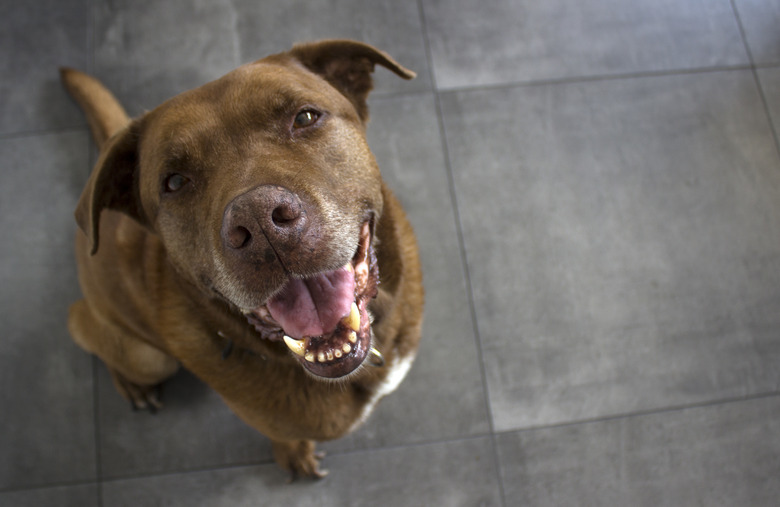Home Remedies For Conjunctivitis In Dogs
Conjunctivitis, or pink eye, is an eye condition in dogs that occurs due to inflammation of the conjunctiva, a mucous membrane that lines the eyelids and the white portion of the eye. Is conjuctivitis an eye infection? Conjunctivitis is commonly thought of as an eye infection but oftentimes it's not an infection. Many different conditions can cause conjunctivitis, and one or both eyes may be affected.
The most common cause of conjunctivitis in dogs
The most common cause of conjunctivitis in dogs
A condition called keratoconjunctivitis sicca (KCS), also known as dry eye, is likely the most common cause of conjunctivitis in dogs. It can affect one or both eyes. These dogs don't produce a sufficient amount of tears to keep the eyes properly lubricated. This results in inflammation. Sometimes, this can result in additional eye issues, like corneal ulcers.
Anatomical causes of conjunctivitis in dogs
Anatomical causes of conjunctivitis in dogs
Some dogs' eye anatomy can make them more prone to conjunctivitis. Dogs with droopy eyelids that roll outward (called ectropion) can be more affected by environmental debris. For other dogs, their eyelids may roll inward, which is called entropion. This causes the eyelashes to rub against the cornea, which leads to constant irritation. There are also dogs who grow eyelashes in the wrong place (called ectopic cilia) or extra eyelashes that rub against the cornea, which is known as distichiasis. These eyelid and eyelash disorders can affect one or both eyes.
Other parts of a dog's facial anatomy can also affect the eyes. Dogs with large nasal folds can develop conjunctivitis when the prominent skin folds repeatedly rub against and irritate their eyes.
Other causes of conjunctivitis in dogs
Other causes of conjunctivitis in dogs
Dogs with environmental allergies can get red eyes. In dogs with allergies, both eyes will be affected. This can be seasonal or year-round. They may also have other signs of allergies, like chronic skin issues.
Various types of infections can also cause conjunctivitis. The list is long and includes viral infections such as canine distemper, bacteria (usually a secondary infection and not the primary cause,) a fungus (Blastomyces dermatitidis), and even a protozoan parasite called Leishmania.
Other causes include eye injuries. Some injuries occur because foreign objects, like plant parts, get into the eye and become trapped under the third eyelid (nictitating membrane). Grass awns, such as foxtails, are known to do this. With some injuries, the eyeball can be punctured.
Symptoms of conjunctivitis in dogs
Symptoms of conjunctivitis in dogs
Symptoms vary depending on the underlying condition causing conjunctivitis as well as the severity of the inflammation. Clinical signs include:
- A red eye or eyes
- Swelling of the conjunctiva and sometimes also the eyelids
- Discharge that may be clear, cloudy, yellow, or green
- Squinting and/or blinking excessively
- Pawing or rubbing the eye on things
If you notice any of these symptoms, call your veterinarian for an appointment right away.
Diagnosing canine conjunctivitis
Diagnosing canine conjunctivitis
The veterinarian's examination will include a complete physical exam including detailed observations of the eye. If your dog's eye is too uncomfortable to allow this, an anesthetic eye drop may be needed to help facilitate an exam.
The eyes' inner and outer structures will be evaluated. This will include but is not limited to looking at your dog's conjunctiva, looking at and under the nictitating membrane where a foreign object could be trapped, searching for eyelashes in abnormal places or eyelashes pointing toward the cornea, and evaluating the cornea.
Special tests may also be done. If your dog has been pawing or rubbing their eye and holding the affected eye shut, it's possible they may have scratched their own cornea. If this is suspected, your veterinarian will apply a special eye stain called fluorescein to evaluate the cornea for a possible scratch or ulcer.
Another test that may be performed is a Schirmer tear test. This is a test to evaluate your dog's tear production. If KCS is suspected, a tear test will be done.
Some dogs with a red eye or eyes may also need to have their intraocular pressure checked to see if it's too high.
Treatments of conjunctivitis in dogs
Treatments of conjunctivitis in dogs
Since the majority of canine conjunctivitis cases are secondary to another condition, treating the affected eye (or eyes) alone isn't enough. Appropriate treatment depends on identifying and addressing the cause. Some dogs may need a topical eye medication, such as an antibiotic or an anti-inflammatory. Others may also need oral medication.
Dogs with KCS require ongoing treatment with medication that stimulates tear production. When their tear production is particularly low, they may also need artificial tears to provide eye lubrication. Warm compresses are sometimes also needed. If they've developed a secondary bacterial eye infection, antibiotic ointments or drops will be prescribed. These dogs need lifelong treatment and regular monitoring.
A dog with eyelash and eyelid disorders requires surgery. They may need to wear an e-collar for a couple of weeks afterward so they don't paw at the surgery site.
Dogs with seasonal or year-round allergies require appropriate allergy medication, which may include eye drops, oral medication, or even injectable medication.
For something systemic like canine distemper (which doesn't have a cure but can be prevented with a vaccine), the infected dog will require supportive care. This may include fluids, antibiotics for secondary bacterial infection, nebulization, and other treatments depending on the severity to help the dog overcome the virus.
Some pets may also need to have excess eye discharge cleaned up with normal saline or an eye wash, but your veterinarian will direct you on this. The cause of your dog's conjunctivitis will also dictate how much follow-up is needed with your veterinarian.
Home remedies for eye infections in dogs
Home remedies for eye infections in dogs
Since eye infections (or other causes of conjunctivitis) can be a part of a more serious underlying issue, there are no safe recommended home remedies for eye infections.
How serious is an eye infection or conjunctivitis in dogs?
Depending on the cause, delaying treatment can worsen the outcome for your dog's eye. If you have to wait a few days for an appointment, ask your veterinary office if there is anything you can do in the meantime. They may suggest using a commercially made eye wash solution, for instance, or using artificial tears to lubricate the eye. There are no other home treatments that you will be able to do. If doing anything to your pet is painful, consider an emergency appointment.
How long does it take an eye infection or conjunctivitis to go away?
This depends on the cause of the eye issue. Some cases of eye infection can resolve in a week with appropriate treatment. Complicated cases can take weeks or require surgery or ongoing medication.
How to prevent conjunctivitis in dogs
There is no general way to prevent eye infections or conjunctivitis in dogs because they can be caused by so many different things. Allergy testing could help you avoid allergy triggers. And consistently using treatments such as eye drops for KCS is important.
The bottom line
The bottom line
There are no safe home remedies for conjunctivitis or eye infection. Conjunctivitis is inflammation of the lining of the eyelids and the white portion of the eye. A pet with conjunctivitis needs to see a veterinarian to determine the underlying cause and also to receive appropriate treatment. Once the cause of conjunctivitis is identified and treated, it usually resolves. A dog who experiences recurrent conjunctivitis may need further treatment.


